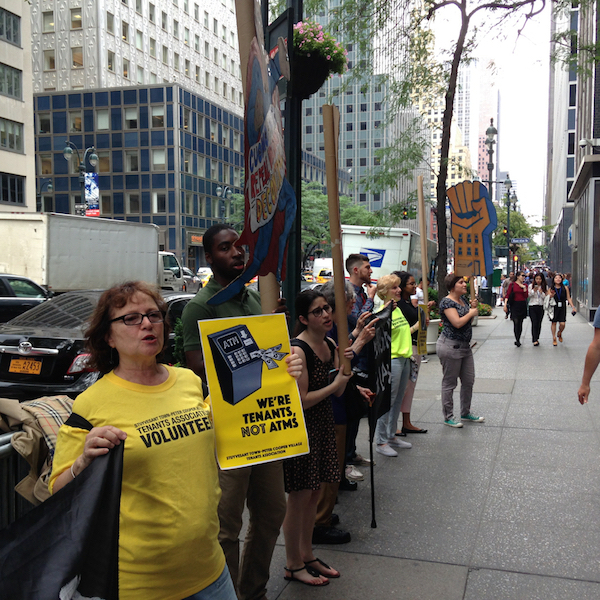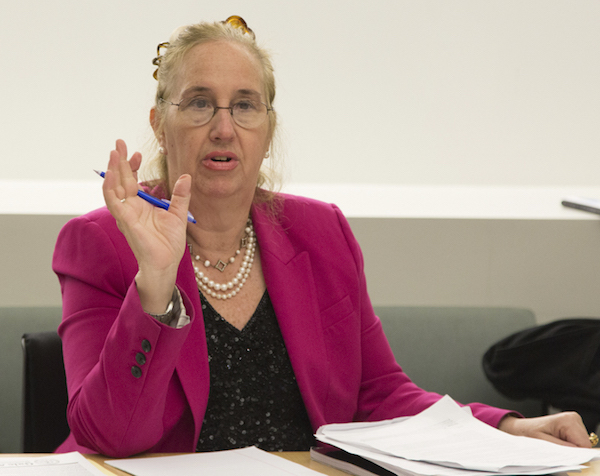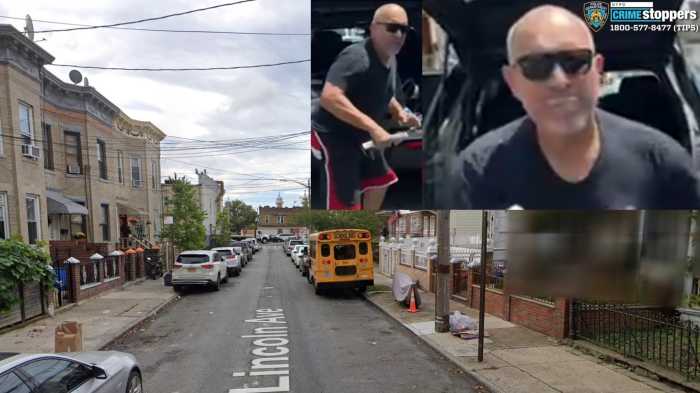
BY EILEEN STUKANE | Residents of Chelsea and Hell’s Kitchen who pioneered once-undesirable neighborhoods now find themselves living on favored city streets, where some new owners/landlords are using various means of harassment to push out rent-regulated tenants and convert their homes into market-rate apartments.
In a Dec. 11, 2015 meeting at the Brooklyn offices of Chelsea Now and our sister publications, Manhattan Borough President Gale Brewer advised that rather than relying on the city, tenants should join together in associations to fight back. She was speaking to what activist organizations see on the rise: the formation of tenant associations in buildings across Manhattan.
Betsy Eichel, Tenant Organizer, Housing Conservation Coordinators (HCC | hcc-nyc.org), noted, “You’re going to get more action as a group than as an individual. The squeaky wheel gets the grease. A tenant association is the most efficient way to get a response.”
KEYS TO A SUCCESSFUL TENANT ASSOCIATION
According to Brewer, for a successful tenant association, “You have to have bylaws, because sometimes there’s dissension in the group and you can resolve it by going back to the bylaws, so that’s one thing that’s really important. You also have to take notes and minutes, keep your records so they can be managed, and keep financials in transparency mode,” she said during a Jan. 12 phone interview.
“These are the very keys to success — bylaws, minutes, keeping the financial records, making them available to everybody, and then try to have fun and regular tenant meetings. Fun and regular, those are the tenant associations that are really successful.” Brewer mentioned that effective tenant associations do not wait for a crisis, but meet to discuss issues regularly, and those meetings often take the form of social gatherings with potluck dinners.
When a landlord wants to make a Major Capital Improvement (MCI), said Brewer, “owners often say you [have to pay — hypothetically for a heating system, or new elevator, or new lobby — which is not allowed. If you’re organized, you can learn from the NY State’s Division of Housing and Community Renewal (DHCR | nyshcr.org/Agencies), the specifics about an MCI, but if you are not organized, you might figure, ‘Oh, I’ve got to pay this.’ ”
While it is more common for rent-regulated residents to form tenant associations when a new owner buys a building and tenants are waiting for the other shoe to drop, Brewer would like to see both rent-regulated and market-rate tenants come together in tenant associations for the greater good of all.

At Avalon Midtown West (AMW), 250 W. 50th St., a building of 546 apartments, the residents of the 100 (421A) affordable apartments would find themselves asking the same questions about their leases and their rights when they ran into each other.
Affordable apartments in the building were not only part of the city’s 421A program but also the state’s Low Income Housing Tax Credit program (LIHTC). “One by one we started gaining strength, and in 2011 we decided to have an informal meeting. There were five residents including myself,” said Jody Madaras, president of AMW’s Tenant Association for the Affordable Housing Program. “Today we have monthly meetings, and of the 100 units, between 30 and 50 attend every meeting.”
Madaras explains that the building’s tenant association has found success in using a slate of elected officers, and monthly meetings that are conducted according to parliamentary procedure. The group relies on HCC for legal counseling, and the offices of New York State Senator Brad Hoylman and Councilmember Corey Johnson have become involved when critical issues arise.
Some tenant associations may retain tenant lawyers to call upon in crisis situations, but there are a number of pro bono legal organizations in addition to HCC that will advise low-income tenant groups, such as The Legal Aid Society and the New York Bar. Tenants can also find information on where to go for help on legal (as well as other) issues, on the Housing Court website: cwtfhc.org/for-tenants.
A recent success for the AMW tenant association was its ability to correct a mistake made by Con Edison, which wrongly coded, and thereby required, utility payments from residents — including seniors and disabled tenants in affordable apartments that should not have been billed. It took four years, but by working with HCC and electeds, and contacting Con Edison and the NY Public Service Commission, the group was victorious.

“According to our leases in the affordability program, heat is to be provided and delivered. The heat was plugged into the electric that we had to pay for, and it was not being delivered,” said Madaras, “so for us, it’s a win, and we’re proud and grateful.” Had there been no tenant association to understand the fine print in leases, there may not have been this “win” for affordable housing residents.
Not to be overlooked, however, is the fact that some residents can become nervous about joining a building’s tenant association. “Many tenants I work with, they really don’t want to rock the boat. They really are scared, afraid. They don’t know that other people are experiencing the same circumstances,” said Eichel. Residents can become wary of consequences that may befall them from an angry landlord, who has the power to turn off the gas. Landlord power can shift to tenant power, however, when a strong tenant association, one that can call a rent strike, exists.
In addition, residents can sometimes disagree with a tenant association president’s approach. “I would say that about a quarter of the people feel that I’m too aggressive, and that I alienate the landlord, and then there are tenants who feel very strongly that I’m not aggressive enough, that I haven’t taken the landlord to court,” says Tom Cayler, president, 517-525 W. 45 Tenant Association. “In 2003, when I became president, I had to make myself a promise that I would never give up, never back off, and I would never stop.”
As reported in Chelsea Now (“Vigilant Tenants Document Fraud and Take Action,” Dec. 23, 2015) Cayler’s buildings’ tenant association authorized a $1,000 payment to a topographic surveyor to prove that building height measurements the landlord’s architect had submitted to the NYC Department of Buildings (DOB) for new construction were at best a mistake, and at worst, falsified. The group’s investment proved wise, as the plans were disapproved.
“I had sleepless nights,” Cayler recalled, “I was pretty sure I was right but I was spending other people’s money to prove that the landlord had done this incorrectly.” The W. 45 Tenant Association has existed for 36 years so far, protecting the rent-regulated loft residences in the five-building complex.
HELPING OTHERS

The success of a tenant association, as with an individual, also comes when there is greater involvement with others. From his 12 years leading his buildings’ tenant association, Tom Cayler has learned that not only does a tenant association need fellow tenants to help the group attain its goals, but it also needs help from the community, which in turn should receive reciprocal support from the association, as the circle goes ’round.
“You have to go out to community board meetings, to forums, to meet the electeds and talk to them. If you really want to be effective, you have to talk to other people, you have to show up. And when other people have problems too, you’ve got to help,” said Cayler, who has become involved in fighting illegal hotels. “I went out and asked for help, and a lot of people helped me. If you’re going to ask people for help, you have to help. You can’t just say, ‘Oh good, thank you so much, goodbye.’ ”
Information on how to form a tenant association can be found on Metropolitan Council on Housing’s website: metcouncilonhousing.org.




































